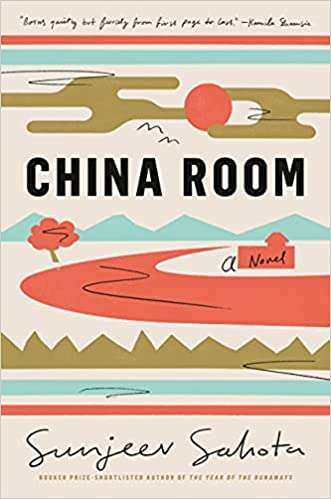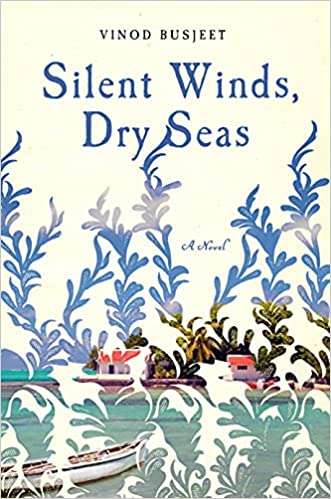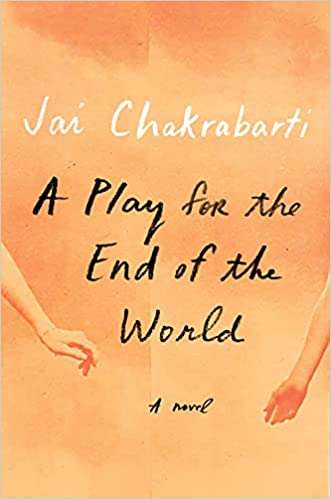
Today’s #FiveDesiFaves segment is a special roundup of five+one recently-featured works of historical and near-historical fiction.
- China Room by Sunjeev Sahota
- Silent Winds, Dry Seas by Vinod Busjeet
- The Begum and the Dastan by Tarana Husain Khan
- A Play for the End of the World by Jai Chakrabarti
- The Grand Anicut by Veena Muthuraman
- The Thinnai by Ari Gautier (tr. by Blake Smith from the French into the English)
These six novels cover many regions and time periods: pre-Independence and 1990s Punjab; 1990s England; 1970s Mauritius; a pre-Independence princely state; wartime Warsaw; 1970s New York; 1970s Calcutta; first century southern India; and colonial Pondicherry. In exploring the dissonance and displacement between then and now, all these works show us how history isn’t simply about long-gone events that happened to other people. History is, of course, an ongoing and wide-reaching process with profound consequences for how we live now.
And please also check out the ongoing historical fiction list at DesiBookshop and let us know if we’re missing your favorites. Apologies but this list is currently for US-published books only.
#FiveDesiFaves: a roundup of 5+1 recently-featured historical fiction: China Room; Silent Winds, Dry Seas; The Begum and the Dastan; A Play for the End of the World; The Grand Anicut; The Thinnai. @desibooks
Tweet
China Room, Sahota’s third novel, is historical fiction with dual narratives: one story takes place in 1929 Punjab from the viewpoint of a young bride, Mehar. And the other is in 1990s Punjab and England and the young narrator, known simply as S., is Mehar’s great grandson. Mehar is one of three new wives of three brothers. None of the women knows who her husband is because of some rather unusual circumstances. As Mehar tries to solve this husband mystery, unexpected events arise, leading to a heartbreaking turning point. In the second story, S., is trying to recover from an addiction, which is linked to a difficult childhood in England where he dealt with racism, violence, and estrangement as the son of immigrant shopkeepers. Finding himself in the china room where Mehar and her two sister-wives had lived, S. begins to piece himself back together again. The novel weaves back and forth through these two stories to illuminate certain common themes and differences.
The author, Sunjeev Sahota, was on #DesiCraftChat in August 2021 to discuss the novel, how the historical story is partly inspired by Sahota’s own family history and why there are no easy endings here for anyone.
China Room by Sunjeev Sahota has dual narratives: one story takes place in 1929 Punjab from the viewpoint of a young bride, Mehar. The other is in 1990s Punjab and England with Mehar’s great-grandson. #FiveDesiFaves @DesiBooks
Tweet
Silent Winds, Dry Seas is an Indo-Mauritian coming-of-age novel. Mostly set in Mauritius, it explores the struggle for independence and success of both the country and a young descendant of Indian indentured laborers, Vishnu Bhushan. It’s a story about identity, place, the legacies of colonialism, tradition, modernity, emigration, and what a family will sacrifice for its children to thrive. As I wrote in my NPR review, in addition to the independence-related politics, the book is also about the everyday politics that play out within and between cultures, communities, classes, families, races, ethnicities, and religions.
In August 2021, the author, Vinod Busjeet, was on #DesiCraftChat to discuss how he came to write the novel, why he switched from memoir to fiction, how he used poetic interludes for dramatic compression, and more.
Silent Winds, Dry Seas by Vinod Busjeet is an Indo-Mauritian coming-of-age novel exploring the struggle for independence and success of the country and a descendant of Indian indentured laborers, Vishnu Bhushan. #FiveDesiFaves @DesiBooks
Tweet
Inspired by real-life characters and events, The Begum and the Dastan is a haunting tale of a grand city and its women unfolding in three main narrative strands from the 19th century until the present. In 1897, in the princely state of Sherpur, Feroza Begum, beautiful and willful, defies her family to attend Sawan celebrations at Nawab Shams Ali Khan’s Benazir palace. Feroza is kidnapped and detained in the Nawab’s glittering harem, her husband is forced to divorce her, and her family disowns her. Reluctantly, Feroza marries the Nawab and is compelled to negotiate the glamour and sordidness of the harem.
In the bazaar chowk, Kallan Mirza, a skilled dastango (oral storyteller), spins a familiar tale of a despotic sorcerer, Tareek Jaan, and his grand illusory city, the Tilism-e-Azam, where women are confined in underground basements. As Kallan descends deeper into an opium addiction, the boundaries of fantasy and reality begin to blur.
And in the present day, Ameera listens to Dadi narrating the tale of Feroza Begum, Ameera’s great grandmother. Confined to her home because her parents haven’t paid her school fees, Ameera takes comfort in Dadi’s story. As her own world disintegrates, she is compelled to ask herself if anything has changed for Sherpur’s women.
The author, Tarana Husain Khan, discussed the novel and what she hopes readers will take away from it in a #DesiBooks10QA interview in August 2021.
The Begum and the Dastan by Tarana Husain Khan is about the women of a grand city and unfolds in three main narrative strands from the 19th century until the present. #FiveDesiFaves @DesiBooks
Tweet
A Play for the End of the World is set in the early 1970s New York and rural India. It’s the story of a turbulent, unlikely romance, a harrowing account of the lasting horrors of the Second World War, and an examination of one man’s search for forgiveness and acceptance. In New York City, 1972. Jaryk Smith, a survivor of the Warsaw Ghetto, and Lucy Gardner, a southerner, newly arrived in the city, are in the first bloom of love when they receive word that Jaryk’s oldest friend has died under mysterious circumstances in a rural village in eastern India. Traveling there alone to collect his friend’s ashes, Jaryk soon finds himself enmeshed in the chaos of local politics and the efforts to stage a play in protest against the government. And that’s the same play that he performed as a child in Warsaw as an act of resistance against the Nazis. So, torn between the survivor’s guilt that he’s carried for decades and his feelings for Lucy (who, unbeknownst to him, is pregnant with his child), Jaryk must decide how to honor the past and the present, and how to accept a happiness that he’s not sure he deserves.
The author, Jai Chakrabarti, was on #DesiCraftChat in September 2021 to discuss the play that the story centers on, Tagore, how art and politics are intertwined, how he gets into the heads of his characters, and more.
Jai Chakrabarti’s A Play for the End of the World is about an unlikely romance, the lasting horrors of the Second World War, and an examination of one man’s search for forgiveness and acceptance. #FiveDesiFaves @DesiBooks
Tweet
The Grand Anicut is a historical novel set in the first century C.E. and focuses on the Chola kingdom in Southern India. King Karikalan’s most ambitious infrastructure project is finally becoming a reality: a dam, the Grand Anicut, is being constructed to divert the waters of the river Kaveri, to the elation of farmers across the land and the discontent of the trader class. Amidst all this, the arrival of a Roman ship carrying the merchant prince Marcellus sets off a series of events that will alter the fate of Tamilakam. Rich in historical detail, this action-packed, riveting tale layered with the eternal struggle between divergent ideas is a fascinating journey into one of the greatest periods of Indian history.
The author, Veena Muthuraman, was on #FiveDesiFaves in September 2021 to share her own favorite historical works. [This has become one of our most popular episodes of 2021.]
The Grand Anicut by Veena Muthuraman looks at the first century Chola King Karikalan and his most ambitious infrastructure project. #FiveDesiFaves @DesiBooks
Tweet
The Thinnai, written by Ari Gautier and translated by Blake Smith from French into English, is about the working-class district of Kurusukuppam. This is not the Pondicherry of tourist brochures. Here, residents are a bewildering mix of Creoles, colonial war veterans, proud communists, and French citizens who have never left India’s shores. It is a place of everyday tragedies, melodramatic occurrences and stubborn, absurd hope. But life in Kurusukuppam is upturned by the arrival of a curious tramp, Gilbert Thaata—a wizened Frenchman who has clearly seen hard times. Settling down on the narrator’s verandah, his thinnai, Gilbert Thaata begins to earn his keep by recounting the tale of the rise and fall of his family’s fortunes as the custodians of a mysterious diamond, the Stone of Sita. The fanciful story that unfolds is one that stretches across centuries and encompasses the history of France’s colonial legacy in India.
The author, Ari Gautier, discussed the novel and the importance of writing about one’s own people in a #DesiBooks10QA interview in September 2021.
The Thinnai, written by Ari Gautier and translated by Blake Smith from French to English, spotlights the working-class district of Kurusukuppam vs. the Pondicherry of tourist brochures. #FiveDesiFaves @DesiBooks
Tweet
Today’s #FiveDesiFaves segment was a special roundup of five+one recently-featured works of historical fiction.
- China Room by Sunjeev Sahota
- Silent Winds, Dry Seas by Vinod Busjeet
- The Begum and the Dastan by Tarana Husain Khan
- A Play for the End of the World by Jai Chakrabarti
- The Grand Anicut by Veena Muthuraman
- The Thinnai by Ari Gautier (tr. by Blake Smith from the French into the English)
Stay healthy, keep reading, and write well.
#FiveDesiFaves: a roundup of 5+1 recently-featured historical fiction: China Room; Silent Winds, Dry Seas; The Begum and the Dastan; A Play for the End of the World; The Grand Anicut; The Thinnai. @desibooks
Tweet
NOTE: If you like the work being done at Desi Books, you can leave some appreciative feedback and sign up for the free, weekly newsletter. And please share this with other readers who might be interested. Remember: A Rising Tide Lifts All Boats.™
Join the Conversation






